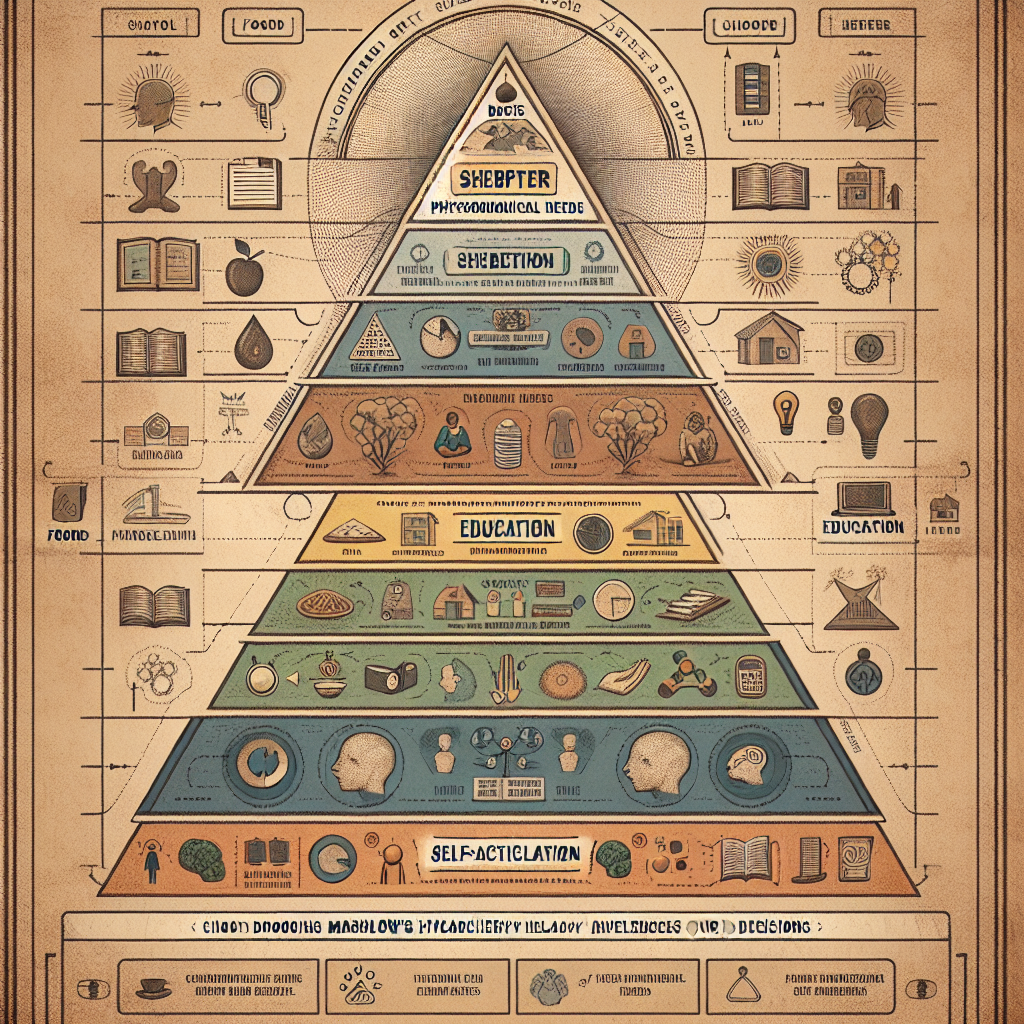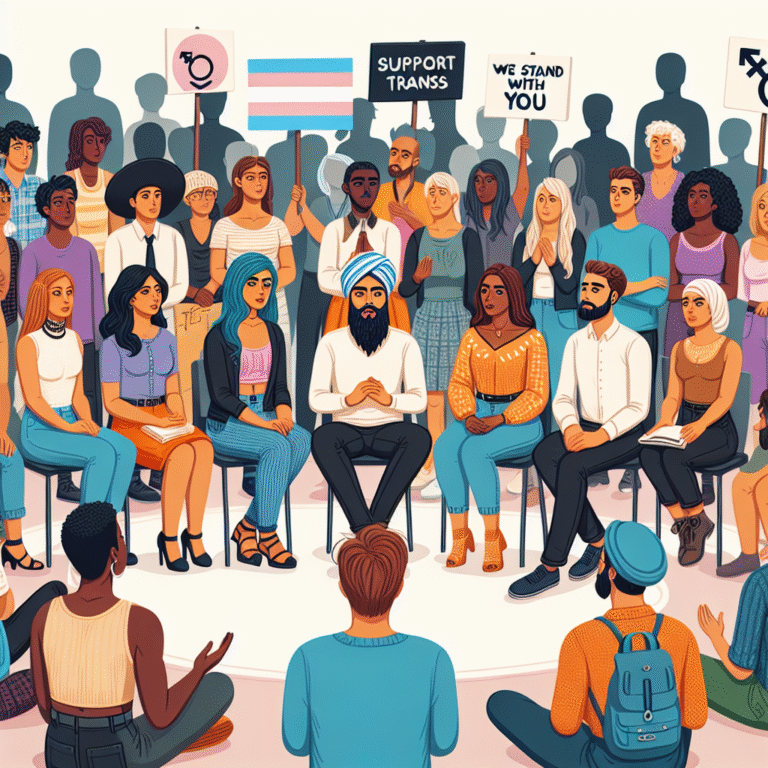
Decoding the Layers: How Maslow’s Hierarchy Influences Our Decisions
Introduction
In the complex realm of human behavior, understanding our motivations is key to making informed choices. Decoding the Layers: How Maslow’s Hierarchy Influences Our Decisions delves into how Maslow’s renowned pyramid of needs not only explains why we do what we do but also helps us gain insight into our everyday choices. From the basic need for survival to the lofty aspirations of self-actualization, Maslow’s hierarchy serves as a powerful framework for interpreting our emotional and psychological landscape. Let’s embark on a journey through the layers of this hierarchy, uncovering how these elemental needs shape our decisions in both personal and professional spheres.
Understanding Maslow’s Hierarchy of Needs
The Structure of the Pyramid
At the core of Decoding the Layers: How Maslow’s Hierarchy Influences Our Decisions lies the five tiers of the pyramid:
-
Physiological Needs: These are the basic essentials for survival, such as food, water, warmth, and rest.
-
Safety Needs: Once physiological requirements are met, the need for security and stability becomes paramount—both physically and emotionally.
-
Love and Belonging: As humans are inherently social creatures, the desire for relationships and community emerges. This layer encompasses friendships, family, and connection.
-
Esteem Needs: This includes the need for respect, self-esteem, recognition, and personal worth.
- Self-Actualization: At the pinnacle, self-actualization refers to the realization of an individual’s potential, seeking personal growth, and self-improvement.
The Importance of the Hierarchy
Maslow’s theory suggests that individuals move through these layers sequentially. Understanding this progression is essential when exploring Decoding the Layers: How Maslow’s Hierarchy Influences Our Decisions. For example, one might prioritize job security when their physiological needs are not fully met, illustrating how decision-making is often contingent on where one finds themselves within the pyramid’s structure.
The Interplay Between Needs and Decisions
Case Study: Employees in the Workplace
Consider a company that introduces a new health and wellness program. At first glance, this initiative might seem like an exercise in employee engagement. However, when Decoding the Layers: How Maslow’s Hierarchy Influences Our Decisions, we see that it impacts various levels of the hierarchy.
| Level | Impact of Wellness Program | Example |
|---|---|---|
| Physiological Needs | Improved health leads to fewer sick days | Employees skipping the doctor due to better well-being |
| Safety Needs | Employees feel secure knowing their health is prioritized | Increased workplace satisfaction |
| Love and Belonging | Team activities promote connection | More collaborative team environments |
| Esteem Needs | Recognition for participation enhances self-worth | Public acknowledgment in meetings |
| Self-Actualization | Employees pursue personal growth through wellness initiatives | Wellness courses promoting holistic development |
This case study shows how wellness programs directly correlate with multiple layers of Maslow’s hierarchy, influencing employee decisions and fostering a more engaged workforce.
The Role of Decision-Making in Maslow’s Hierarchy
Rational vs. Emotional Decision-Making
When we think about Decoding the Layers: How Maslow’s Hierarchy Influences Our Decisions, it’s crucial to recognize the distinction between rational and emotional decision-making.
-
Rational Decision-Making: This approach is typically tied to lower layers of the pyramid. Individuals focus on practical needs which dictate straightforward choices, like budgeting for essential groceries.
- Emotional Decision-Making: Higher up the pyramid, personal motives and emotional ties come into play. This often leads to more complex choices—like pursuing a career change that aligns with personal passions despite financial instability.
Case Study: Consumer Behavior
In retail, brands utilize Maslow’s framework to tailor advertising and product offerings. For instance:
- Luxury Goods: These often appeal to the esteem needs, where consumers choose high-end products for the prestige they confer.
| Product Type | Target Need | Example |
|---|---|---|
| Basic Necessities | Physiological Needs | Grocery stores focusing on affordability |
| Health Insurance | Safety Needs | Campaigns promoting peace of mind |
| Social Media Platforms | Love and Belonging | Marketing strategies emphasizing connectivity |
| Personal Development Courses | Self-Actualization | Programs highlighting lifelong learning |
Through this lens, businesses can better align their strategies with consumer motivation, making informed marketing decisions grounded in psychological principles.
The Influence of Culture on Hierarchical Necessities
Societal Variability
Cultural norms and values significantly influence how individuals navigate Maslow’s hierarchy. For instance, in collectivist societies, the emphasis may skew towards the love and belonging layer, impacting decisions like career paths and social engagements, compared to individualistic cultures that might prioritize self-actualization more.
Case Study: Global Companies
Let’s look at multinational corporations like Unilever and how they adapt their strategies according to cultural contexts.
| Region | Primary Focus | Strategic Adaptation |
|---|---|---|
| Western Nations | Esteem & Self-Actualization | Innovative products promoting self-enhancement |
| Eastern Nations | Love & Belonging | Family-oriented advertising campaigns |
| Developing Countries | Physiological & Safety Needs | Affordable essentials and job security messages |
Understanding this cultural variance is key to Decoding the Layers: How Maslow’s Hierarchy Influences Our Decisions globally and in multiple demographics.
Practical Insights: Implementing Hierarchical Awareness
Personal Growth Strategies
Embracing Maslow’s hierarchy not only offers profound insights into our decision-making processes but also empowers personal development. Here’s how to leverage these layers effectively:
-
Assess Your Current Layer: Reflect on where you currently sit within the pyramid. Are your physiological and safety needs met?
-
Identify Growth Opportunities: Explore avenues to climb the pyramid. If your esteem needs are lacking, consider pursuing skills or accolades that contribute to your self-worth.
- Create Action Plans: Develop concrete strategies that align with each pyramid layer, ensuring that progress is systematically addressed—whether through personal growth activities, community engagement, or career advancement plans.
Applying This Framework in Daily Life
Understanding the layers of Maslow’s hierarchy can be instructive in the workplace, social scenarios, and even within family settings. For instance, when conflict arises, identifying the underlying needs can facilitate resolution and foster better relationships.
Conclusion
Decoding the Layers: How Maslow’s Hierarchy Influences Our Decisions reveals a profound connection between our needs and our choices. From organizational strategies to personal growth, understanding this framework can be pivotal in navigating both personal and professional landscapes. As we recognize the influences behind our decisions, we empower ourselves to make choices that yield not only personal satisfaction but also contribute positively to the communities and organizations we engage with.
Embrace the insights gleaned from Maslow’s hierarchy and begin your journey towards fulfilling your potential and making informed, strategic decisions that resonate with your true self.
FAQs
-
What are Maslow’s five hierarchy levels?
- The five levels are physiological needs, safety needs, love and belonging, esteem needs, and self-actualization.
-
How can I apply Maslow’s Hierarchy in my workplace?
- By identifying employee needs within the hierarchy, organizations can tailor their benefits and recognition programs accordingly to enhance productivity and job satisfaction.
-
Can someone move back to a lower layer after achieving higher levels?
- Yes, circumstances such as job loss or personal difficulties can cause individuals to regress to lower layers for security.
-
Is Maslow’s framework still relevant today?
- Absolutely! Maslow’s hierarchy remains a foundational theory in psychology and human motivation, relevant in varied contexts from education to business.
- How can I identify what layer I’m currently in?
- Evaluate your basic needs: Are you struggling for stability? Do you have social connections? Reflecting on these aspects will help determine where you stand in the hierarchy.
By understanding and applying these principles, you can better navigate your life’s decisions while fostering deeper connections with others.


















